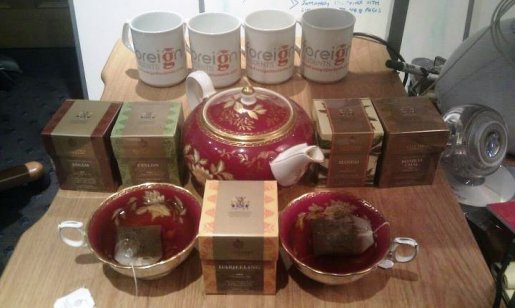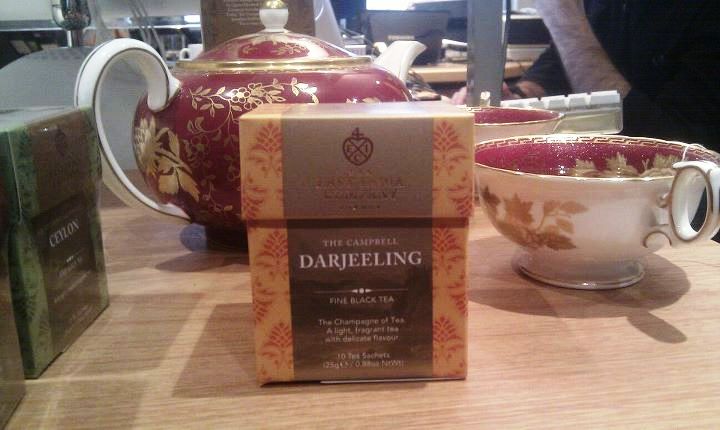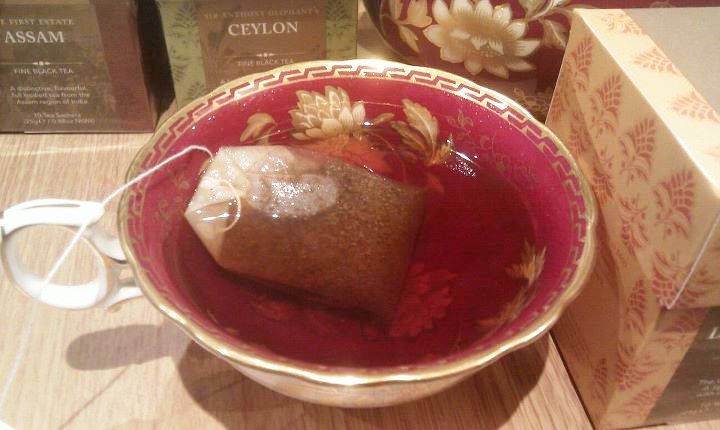Darjeeling is a blissful hill station in located at the footsteps of the majestic Himalayas. The heavenly ambience, the misty mountains, rolling tea gardens, evergreen forests and friendly people constructs Darjeeling into a most sought after tourist destination in the world. Synonyms with “Queen of the Hills”, Darjeeling is a truly a honeymooner’s paradise. The overwhelming charisma of Darjeeling is sure to mesmerize its visitors. Come to Darjeeling and let the cool breeze revitalise you.
Darjeeling is a small hills station with big surprises. Reaching Darjeeling is quite easy as it is well connected with roadways. The nearest airport is at Bagdogra, a downhill ride of three hours via Kurseong. Tours to Darjeeling is usually an escape from the scorching heat of the plains. On the way to Darjeeling the view of the lush green hill, the Kanchenjunga the third highest summit of the world, monasteries and slanted roof house are repeated. Once you reach Darjeeling check in the hotel and get ready for a mystical journey in the “Queen of the Hills”.
The first attraction of Darjeeling is the World Heritage Toy Train. The toy train of Darjeeling is the hallmark of the town. Introduced by the British and came in effect in the year 1881. From then till date, the toy train of Darjeeling is known worldwide for its joy ride. Previously the train used to go down till Siliguri but due to natural calamities, the journey is limited up to Ghoom Station, the second highest station in the world. The chugging of the engine, the smoke from the chimney and whistle at every bend, the view of the train amaze the passersby.
Darjeeling honeymoon tours Packages is a getaway from the hassles of the long marriage reception. Come to Darjeeling with the soul mate and explore the diverse attraction together. The best thing of the Hotels in Darjeeling is the fireplace. Darjeeling is usually cold in the evening so most of the rooms in the hotels have fireplace to keep the room warm. Share your intimate time and be together forever. Other places of interests in Darjeeling are the tiger Hill the sunrise point, the Japanese Peace Pagoda, PadmajaNaidu Zoological Park, Himalayan Mountaineering Institute, Ropeway, Chowrasta, Observatory Hill and the Mahakal Temple and the Rock Garden. If time permits you can pay visit to Kalimpong. The same road takes you to Gangtok, the second smallest state of India.
Sikkim is nestled in the lap of the Himalayas. The land of Sikkim is blessed with lakes, monasteries, gardens and picturesque landscapes. Sikkim honeymoon package is an opportunity for an exquisite and unforgettable experience in paradise. Thought a small state, Sikkim is a hub of life-size surprises. The Tsomgo Lake in Sikkim is of major attraction. The lake is frozen in winter and the view of the neighbouring landscapes and mountains are breath taking. The Nathula Pass is the border between India and China. It is a trading zone you will have to get a permit to visit the place. Tashi View Point, Lachung, Gurudongmar Lake, Lachen are some of the other places that you must visit during you tour to Sikkim.
In totality, Darjeeling and Sikkim offers a phenomenal experience to all the visitors. Click candid photos and take back memories lasting for a lifetime.
Arvind Kumar is an eminent analyst and writer in Travel & Tours related topics. He has authored many books on Honeymoon Packages in Darjeeling and Darjeeling Tourism.
Darjeeling is a small hills station with big surprises. Reaching Darjeeling is quite easy as it is well connected with roadways. The nearest airport is at Bagdogra, a downhill ride of three hours via Kurseong. Tours to Darjeeling is usually an escape from the scorching heat of the plains. On the way to Darjeeling the view of the lush green hill, the Kanchenjunga the third highest summit of the world, monasteries and slanted roof house are repeated. Once you reach Darjeeling check in the hotel and get ready for a mystical journey in the “Queen of the Hills”.
The first attraction of Darjeeling is the World Heritage Toy Train. The toy train of Darjeeling is the hallmark of the town. Introduced by the British and came in effect in the year 1881. From then till date, the toy train of Darjeeling is known worldwide for its joy ride. Previously the train used to go down till Siliguri but due to natural calamities, the journey is limited up to Ghoom Station, the second highest station in the world. The chugging of the engine, the smoke from the chimney and whistle at every bend, the view of the train amaze the passersby.
Darjeeling honeymoon tours Packages is a getaway from the hassles of the long marriage reception. Come to Darjeeling with the soul mate and explore the diverse attraction together. The best thing of the Hotels in Darjeeling is the fireplace. Darjeeling is usually cold in the evening so most of the rooms in the hotels have fireplace to keep the room warm. Share your intimate time and be together forever. Other places of interests in Darjeeling are the tiger Hill the sunrise point, the Japanese Peace Pagoda, PadmajaNaidu Zoological Park, Himalayan Mountaineering Institute, Ropeway, Chowrasta, Observatory Hill and the Mahakal Temple and the Rock Garden. If time permits you can pay visit to Kalimpong. The same road takes you to Gangtok, the second smallest state of India.
Sikkim is nestled in the lap of the Himalayas. The land of Sikkim is blessed with lakes, monasteries, gardens and picturesque landscapes. Sikkim honeymoon package is an opportunity for an exquisite and unforgettable experience in paradise. Thought a small state, Sikkim is a hub of life-size surprises. The Tsomgo Lake in Sikkim is of major attraction. The lake is frozen in winter and the view of the neighbouring landscapes and mountains are breath taking. The Nathula Pass is the border between India and China. It is a trading zone you will have to get a permit to visit the place. Tashi View Point, Lachung, Gurudongmar Lake, Lachen are some of the other places that you must visit during you tour to Sikkim.
In totality, Darjeeling and Sikkim offers a phenomenal experience to all the visitors. Click candid photos and take back memories lasting for a lifetime.
Arvind Kumar is an eminent analyst and writer in Travel & Tours related topics. He has authored many books on Honeymoon Packages in Darjeeling and Darjeeling Tourism.



